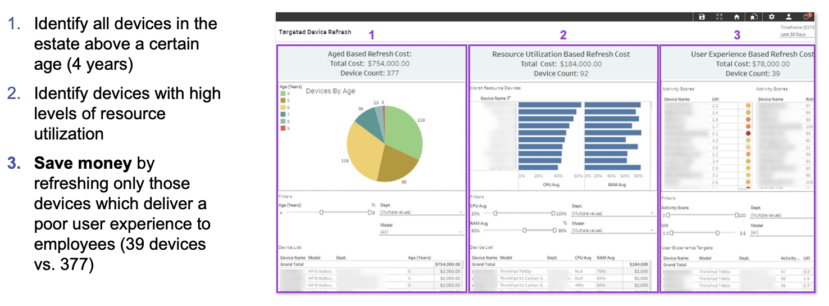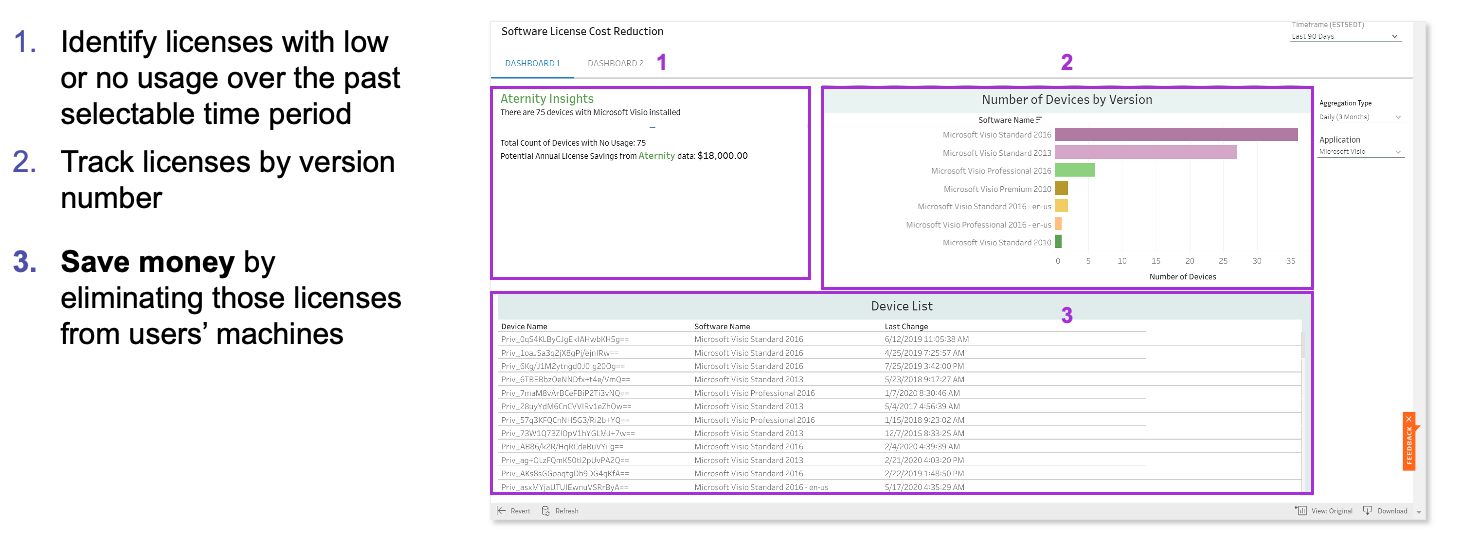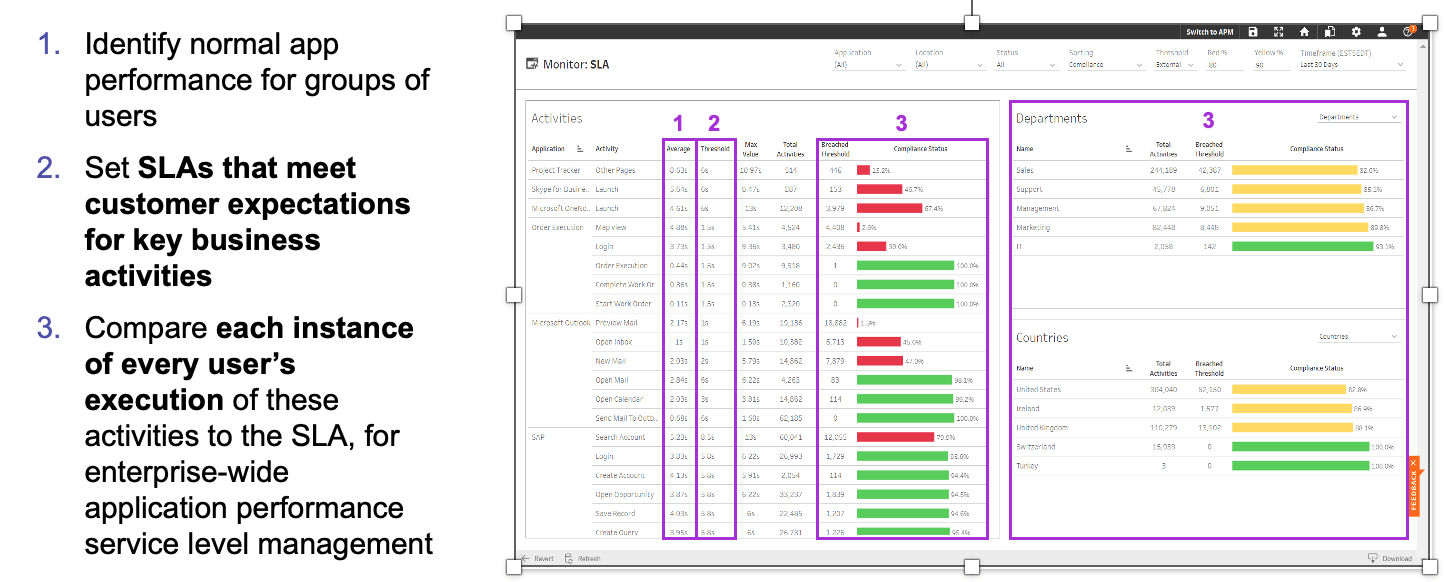The latest FITARA scorecard is out. Whether your agency is satisfied with its grade (or not), there’s a good chance you’re already thinking about ways to improve before the next scorecard. Riverbed can help you improve many of your metrics—particularly in the category of Portfolio Review.
Portfolio Review: What it means to succeed
FITARA grades agencies on their performance across seven areas tied to how they buy and manage their IT. One of these areas is Portfolio Review—also known as PortfolioStat—which assesses how well agencies are reviewing their IT portfolios to save costs, increase efficiency, and reduce waste and duplication. As part of their review, agencies must also demonstrate how their IT investments align with their mission and business functions.
An agency’s PortfolioStat grade is based on its ratio of IT cost savings to total IT budget over the last three years. The higher the ratio, the higher the grade—but FITARA also scores on a curve, so that the eight agencies with the highest ratios receive A’s, the next six receive B’s, and so on. This means that to raise your grade, you not only need to do better than before—you also need to keep pace with other high-performing agencies.
Whatever your most recent grade, there are steps you can take now to make measurable progress by the next scorecard—and equip your agency for continuous improvement.
Top 3 ways to raise your PortfolioStat score
1. Know what you have
Before you can make decisions about your IT environment, you need to understand everything that’s in it—end users, endpoint devices, applications, tools, network devices, etc..
Many organizations have massive environments, and getting an accurate inventory is no small task. To do this, you need firm, quantifiable data. If you rely on assumptions, estimates, or anecdotal information, you’ll never discover things you didn’t know you had. And if you try to conduct your audit manually, it will be daunting, time-consuming and not necessarily exact.
But with the right system recording every component in the environment, agencies can audit at speed and with high accuracy. Not only will this inform your long-term planning, but it can also help you make immediate improvements. For example, you could quickly identify duplicate technologies, devices over a certain age, or devices with low usage. This will make it easier to eliminate tools you don’t need and instantly eliminate costs.
Riverbed Unified Observability solutions can help your agency do this by providing fast, full visibility to your entire environment. It allows you to quickly discover and document every asset in your IT environment – from infrastructure to applications. This gives you the quantifiable data you need to make timely, effective decisions with zero blind spots.

2. Know who’s using it and how often
Once you know the assets you have and where they are, you need to understand their usage. Specifically, which ones are being used, how many people are using them, and how frequently.
This is key to rationalizing your investments and determining whether they align with your mission; if it’s not being used, it doesn’t align with your mission. These insights also help you identify potential wasted costs by spotlighting investments that are either underutilized or not serving a purpose, or if multiple tools are being used to achieve the same thing.
IT Asset Cost Reduction can help you measure the utility of every asset in your portfolio. We have the unique capability to see traffic across the entire environment—allowing you to understand which resources are being used, by whom, and how often. From there, you can quickly identify assets that are redundant or unnecessary, which ones could be better utilized, and even which ones are delivering the most value.

3. Know how it’s performing
Next, you need to understand the health and performance of your network, apps, and endpoints. This will help you save costs and improve the end-user experience by enabling you to fix what needs to be fixed and replace only what needs to be replaced.
This means identifying the true root cause of an issue so you can take informed action to solve it instead of wasting time and money on the wrong solution. For example, if UX is poor due to slowness, you need to know if that slowness stems from the network, an application, the device, or possibly even a multi-factor situation. Without solid performance data, an organization may spend money on replacing a device or wasting time implementing a fix that only partially addressed the issue because the real cause was actually something else. But with end-to-end performance monitoring, you know exactly which component needs attention and how it may be impacting other parts of your infrastructure.
You should also validate the performance of your existing assets to avoid arbitrary replacements. Every replacement decision you make should rely on performance data—not perceptions or assumptions. For example, don’t assume a device needs to be replaced solely because of its age. An agency may have a policy to replace devices every five years; but if those devices are working fine, and you can gain quantifiable data showing them to be healthy there’s no need to invest in new ones and significant cost can be deferred.
Riverbed can help your agency monitor and measure performance of every component in your infrastructure—allowing you to make cost-effective decisions and solve issues faster. Unlike other tools, we cover the entire infrastructure with one platform. Others may require multiple point solutions to monitor the individual pieces of your environment—delivering disparate data for network, applications, and devices that you’d have to correlate on your own. Meanwhile, Riverbed captures and correlates all performance data from all domains and puts it into context. This gives you a complete, current picture of performance end-to-end, so you can quickly identify root causes and effects.
Unlike its competitors, Riverbed uses full-fidelity data with no sampling. When other tools sample, by definition, they’re not collecting all the data. But Riverbed captures all packets and all data flows to provide the most granular and accurate insights possible.

Remember, you can’t improve if you don’t know your starting point
To make and demonstrate improvement, you need current, complete and quantifiable data to understand your current IT landscape. This will give you an accurate starting point, so that every decision is informed, and every outcome is measurable.
Riverbed supports precision-guided IT service delivery, and we can help you establish that starting benchmark. From there, we can help you gain insights you need to make the most informed decisions about which assets to keep, consolidate, replace, remove or invest in.
Outcomes should drive investment
Consider the goals of FITARA in general and the goals of Portfolio Stat specifically: cost savings and avoidance, efficiency, compliance, and clear alignment with the mission. With these in mind, let the data tell you where to invest—and invest only in what will help you achieve these outcomes.
Riverbed uniquely supports all those outcomes in a single suite of product—allowing your agency to achieve compliance at least cost. Whether your agency is already using Riverbed or you have yet to experience its benefits, we welcome the opportunity to help you leverage its capabilities to their full potential to add near-immediate value to your portfolio review.
Want to increase your score? Contact us to learn more!
